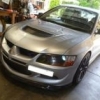Announcements
-
Similar Content
-
Latest Posts
-
By joshuaho96 · Posted
You definitely have a big problem if with the adjustment screw closed up you're idling at 1200 rpm. Have you verified you have no vacuum leaks? No throttle shaft seal leaks? Nobody has messed with the throttle body set screws? I would love to see what Consult reports when your engine is idling that high. -
By joshuaho96 · Posted
HICAS has a much more complicated circuit diagram, for some reason the R32 GTR service manual discusses both. The HICAS module has proper 2 way communication over consult, the "EPS control unit" doesn't have any of that and only exposes a raw analog voltage for the EPS solenoid valve. It's ultimately mostly about speed sensitive steering but the non-HICAS unit also looks at the neutral switch/brake/clutch switch to adjust how it provides assist. -
By No Crust Racing · Posted
I'm still negotiation Aus Time attack which falls on my wife's birthday weekend... -
Yeah, that doesn't necessarily mean that it flows. If the exit side pipework is blocked somewhere (in the hose, in the nipple that it returns into the motor/plumbing, etc), but the supply side is not blocked, then when you crack the bleeder you will get flow from the open side. But when you close the bleeder - no flow. And.... therefore no heat. You might have to work a little harder to prove it to yourself. When I bought my engine the entire IACV bleeder was choked with cooling system schmutz. I had to clean it and the pipework out before it would work.
-
"The outer is separated from the inner by the rubber" duh....I know that, I should have figured that out, gheeze. thanks, I'll replace it.
-






Recommended Posts
Create an account or sign in to comment
You need to be a member in order to leave a comment
Create an account
Sign up for a new account in our community. It's easy!
Register a new accountSign in
Already have an account? Sign in here.
Sign In Now